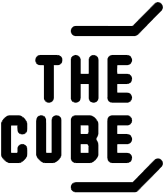ORIGIN
The user experience has been transformed in recent years by the emergence of new technologies and trends that seek to provide the greatest possible value to the consumer in terms of product, service and customer service.
OBJECTIVE
Find new technologies focused on improving and bringing additional value to the consumer in the retail and horeca sectors, as brands that offer a unique and memorable experience at both physical and online points increase the likelihood of attracting and retaining new customers.
Challenges

Improving data-driven purchasing processes
The increased use of apps and websites for consumption means that companies have better access to data related to consumption patterns. By implementing algorithms that feed on this data, the shopping process can be personalised, resulting in greater user loyalty thanks to a better understanding of their habits and preferences.

Improving the omni-channel shopping experience
The growing commitment to omnichannel shopping makes it necessary to pay attention to the shopping experience, both in the digital sphere and at the physical point of sale, as both have an impact on the user's perception of the shop and the product. The accompaniment of the user in the online channel through virtual assistants, "Live-Shopping", actions in the Metaverse, as well as the implementation of new technologies at points of sale such as AR and VR or electronic tags, and the synergy between both channels are key when it comes to positioning.

Improving the post-purchase customer experience
To ensure that the completion of a purchase or the use of a service does not mean losing a consumer, adding value to the post-purchase experience through technology is key, personalising the communications sent through data analysis, adding value-added services once the purchase is complete, including new technologies linked to the evolution of loyalty, affiliation and rewards programmes (Loyalty & Rewards).




